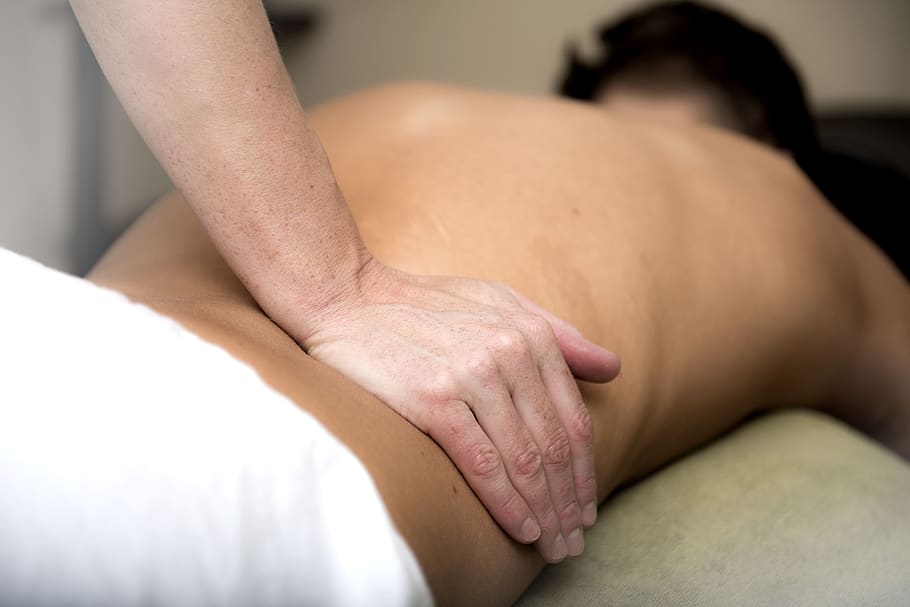
The last week in October is National Massage Therapy Week, a week dedicated to promoting the benefits of therapeutic massage therapy and how massages can be essential to your well-being rather than just a luxury. Massage therapy is used for decreasing pain, soreness and stress while increasing range of motion and improving your mood. When looking for a massage therapist, seek one who is well versed in massage therapy for wheelchair users as there are specific treatments used for those with mobility limitations or medical ailments.
For those in a wheelchair due to their mobility limitations, massage therapy can be greatly beneficial for your health; both mental and physical. Given the amount of time spent sitting in your wheelchair, it is expected that the muscles become tight and even weakened due to lack of use. If you are in a manual wheelchair, some muscles can end up being overworked, also leading to sore and tight muscles. Sore, tight, and weak muscles and the stress created by trying to live independently in an able-bodied world, can be treated with routine massage therapy by a licensed massage therapist.
Wheelchair users, while mobile, still live a sedentary life and this leads to decreased circulation and even pressure sores. A licensed massage therapist can stimulate blood flow by applying pressure to certain areas of tissue and muscle groups. The increased blood flow can even alleviate pressure sores. Some medical doctors and physical therapists may advise the use of massage therapy as a form of treatment or method for improving the range of motion.
Once you have decided to get a massage for your aches and pains associated with regular wheelchair use and identify a licensed massage therapist who understands the specific needs of a mobility-limited massage client, you will need to discuss the best options for your massage goals. The basic and most traditional massage is a Swedish massage. This is ideal for those who are new to massages or are looking to simply relax rather than receive a recovery or muscle relief massage. Most massage spas offer hot stones with Swedish massages. If given the option, it is often advised to opt for a hot stones add-on service because the addition of heat from the stones allows for deeper penetration of the muscles which allows for additional relief and relaxation. Deep tissue massages are often not recommended for wheelchair users due to the high level of pressure and muscle penetration from this form of massage.
The best type of massage for wheelchair uses is what you want and what is best for your body. The first time you meet with your massage therapist, they will have you fill out a questionnaire containing your massage goals, medical history (such as diabetes, mobility limitations, and heart conditions), and any allergies or sensitivities (such as essential oils or lotion additives). This information is necessary to ensure your massage experience is safe and beneficial to you.
Before the massage begins, your massage therapist will review your questionnaire with you and discuss the details necessary for you to enjoy your massage. This includes pressure intensity, focus points lotion/oil fragrance, talking or silence, and even music or white noise options. Don’t be afraid to ask your massage therapist to focus on certain areas that need more attention or avoid other areas. Once you and your massage therapist are on the same page, depending on your mobility abilities, they will leave the room and ask you to lay on the massage table beneath a sheet. As the massage therapist might be reticent to offer assistance if needed or is not able to due to liability concerns, it is best to have someone you are familiar with accompanying you to help you onto the table.
Upon their return, the massage therapist will ensure your neck and head are comfortable and begin. During your massage, if you were thorough enough during the questionnaire portion, your only job is to close your eyes, take deep breaths, and relax. Your current mental state will determine if you let your mind drift off and sometimes fall asleep or stay focused and concentrate within the moment on each motion the massage therapist makes on your skin. The key is to relax. At the end of the massage, your massage therapist will bring you a glass of water and ask you about your experience. Share what you liked, didn’t’ like, and what could be improved upon. Be honest as this will aid in your massages going forward. To guarantee a consistent experience with each massage, try to stick with the same masseuse for each massage session you schedule. You will see benefits faster when you consistently receive your massage from someone familiar with your body, massage goals, and physical needs/limitations.
National Massage Therapy Awareness Week is held annually during the last week of October. This year, it runs from October 25-31, 2020, and promotes the many benefits of therapeutic massage. Always seek a massage therapist who is experienced in wheelchair user massages and do not be afraid to ask any questions that may come to mind. Their job is to help you relax and feel better, your job is to relax and enjoy the experience.